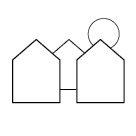Wellness has always been an important feature in urban living; it gives its residents the opportunity to exercise without leaving the building and promotes an active, healthy lifestyle. This amenity is still important, but how it is being implemented in multi-family homes is transforming due to current trends and future lifestyles.
Technology has changed the way people see physical exercise rooms. Virtual fitness, otherwise known as “exercise on-demand”, is becoming more prevalent in addition to the classic workout room. Connectivity allows for immediate access to thousands of workout videos. Residents no longer need to take time out of their day to attend in-person classes, but can instead do it on their own time.
Today, wellness as an amenity goes beyond the physical aspect. Future generations acknowledge the importance of nourishing both the physical and mental aspects of health.
Overall, Gen Z takes a holistic view of health, emphasizing physical fitness, healthy eating, and mental well-being. Recognizing the latter segment, having come up in a world of increased anxiety, 72% of Gen Zers say managing stress and mental health is their most important health and wellness concern. [8]
After speaking to property managers and leasing agents at various urban multi-family homes, it was surprising to see that wellness as an amenity was not necessarily verbalized as an important selling point or attraction. It seems that the inclusion of a wellness center is now expected for potential renters.












